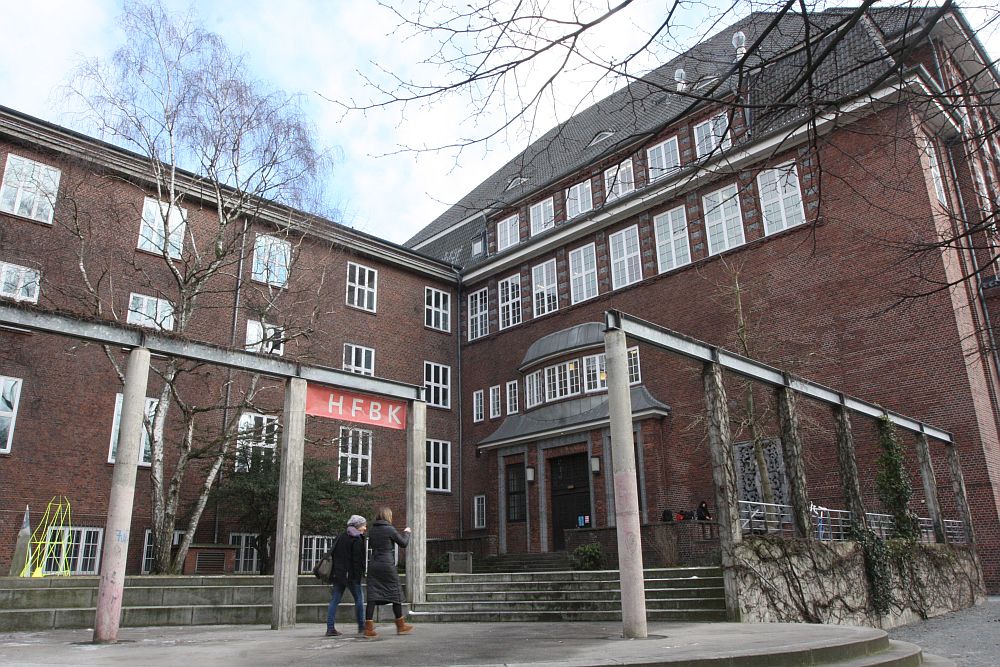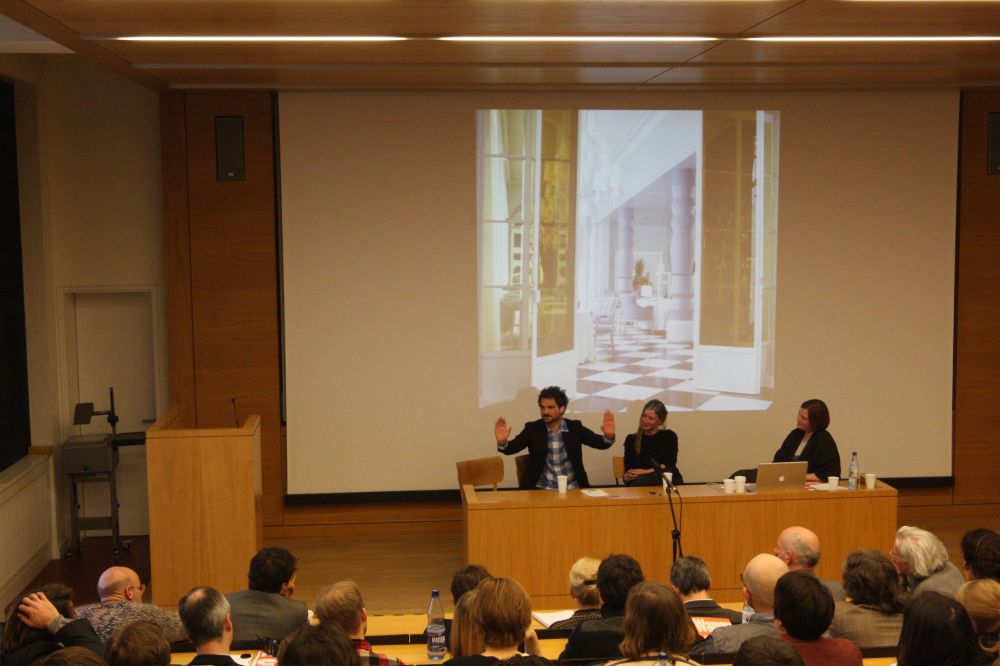During the "Summaery" exhibition back in July 2011 we asked Professor Bernd Rudolf, Decan of the Architecure Department at Bauhaus Uni Weimar, about the motivations of the modern architecture student. "It is still the case", he answered playfully, "that they all want to make the world a better place. That remains the principle reason for studying architecture..."
And designers ? Can designers make the world a better place? Do they even want to ? What motivates contemporary designers ?
At their 2012 design symposium the HFBK Hamburg attempted to find some answers to the question "Warum Gestalten ?" (Why Design ?)
Or at least move towards finding some answers.
To this end six professors from the HFBK design department each invited a design professional along who presented their view on design, the design process and for all why. The high-calibre line-up featuring Andrej Kupetz, Axel Kufus, Jaime Hayon, Nienke Klunder, Christoph Schäfer, Andreas Brandolini and Peter Kubelka.
(As a small administrative note: on account of the event "somewhat" over-running and our pressing need to catch a train to Berlin, we missed Peter Kubelka. And so his insights and opinions sadly aren't included here.)

First up was the German Design Council's CEO Andrej Kupetz. For us a good opening because as a "non-practicing designer" he spoke not about his own motivations but more about design in broader terms and where design can make a difference.
Why design? as is in "What's the point?" rather than "This is why I do it". As it were.
A large part of his presentation was concerned with materials in various contexts, and in particular what he referred to as the designers (old) dream of a weightless world. Of dematerialisation. Of producing products that require fewer resources.
The weightless world as a synonym for designers creating a better, sustainable, world. Of designers helping solve global problems. As a possible answer to the question "why".
This dream, according to Andrej Kupetz, remains unfulfilled; largely because of industry.
Industry, so Kupetz, makes most of its money from product differentiation, be it in surfaces, colours or materials. Such suffocates innovation, and so original design, because it doesn't bring the necessary finacial gains.
A view which fits very nicely with what a senior manager from a leading designer furniture producer told us had struck him about his visit to IMM Cologne 2012 - very few truly new products, but lots of producers who have developed their products further in terms of fabrics or colours.
Which of course raises the question who decides what is produced and what is not produced? Or perhaps put another way who decides which designs are realised ? A topic that was to become one of the underlying themes of almost all the presentations.
For Andrej Kupetz design is driven by marketing. The role of the designer being to help consumers straddle the obvious divide between belonging to a group and being individual. In a similar vein Christoph Schäfer brought in the concept of "Royal Participation" - where individuals are led to believe that they are playing a participatory role in a process. But are in fact just pawns in a much bigger game and all too often an innocent tool to help increase profits. Jaime Hayon spoke, with some passion, about his disdain for marketing analysts in the product design industry. The fixation with what consumers allegedly want limiting the producers vision, stifling new ideas and creating insecurity.
A scenario that would mean that most designers do little more than create what marketing departments dictate. Which could lead one to ask the designers. Why design?
Could.
Were the assembled designers not unanimous in their belief that the principle pre-occupation, or function if you like, of a designer is experimenting.
Commercial products are a desirable conclusion of the experiment. But not the raison d'etre of the experimentation.
Axel Kufus, for example, spoke of the workshop as being a laboratory, of products as being aggregates of processes. His former partner-in-crime Andreas Brandolini recalled how the Bellefast collective produced their own products to sell, explicitly to raise money to allow them to experiment. The products themselves had little or no meaning for their creators, although for the public they were the only tangible evidence of the designers work. In a similar context, one of Andrej Kupetz's illustrations for a weightless world was Pressed Chair by Harry Thaler through Moormann. As we all know, a commercial product that is the result of experimenation by fantatics whose only motivation was seeing if it's even possible. And which links in with something Axel Kufus said about designers creating processes rather than products.

Which all-in-all left us feeling a bit stuck in a sort of Penrose Triangle.
Industry needs design to make sure the profits keep rolling in. Designers can deliver the solutions. Which they do to pay the bills to allow them to experiment.
Society needs design to help it overcome problems. Designers can deliver the solutions. Because they experiment. Work for which they often aren't directly paid for. But which they understand as their main function. In contrast to the public who understand designers as creators of commercial products.
Products which generate income for industry.
Naturally it did occur to us a couple of times during the afternoon that if less money was invested in producing sooooo many new chairs, tables and lamps to further flood an already over-saturated market, more designers could be paid to do the experimentation that not only potentially helps society but also produces truly innovative new chairs, tables and lamps that do more than generate extra waste.
But then we realised that was stupid. What would all the "design blogs" and glossy magazines write about?
And designers. Why do designers need design? Design for them may be experimentation. But what is the motivation? The drive?
A question which of course brings us back to Professor Rudolf. Are designers, like architects, motivated by a desire to change the world?
Jesko Fezer looked his guest Andreas Brandolini square in the eyes, "Why Design?"
"Because its fun!" replied Brandolini "I'm not happy when I have nothing to do!"
Loud applause from the assembled design students and professional designers.